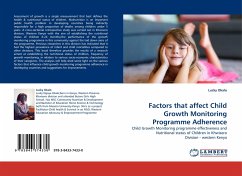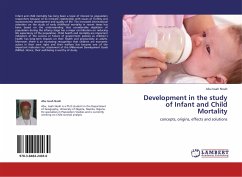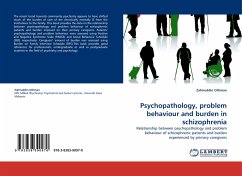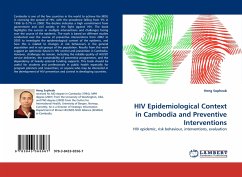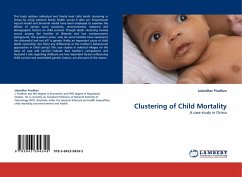
Clustering of Child Mortality
A case study in Orissa
Versandkostenfrei!
Versandfertig in 6-10 Tagen
32,99 €
inkl. MwSt.

PAYBACK Punkte
16 °P sammeln!
This book address individual and family level child death clustering in Orissa by using national family health survey-II data set. Proportional hazard model and binomial model have been employed to examine the effects of various socio economic, environmental, maternal and demographic factors on child survival. Though death clustering heavily occurs among the families of illiterate and low socioeconomic background, the question arises, why do some families have experience this distressful and not all? Is genetic frailty an important cause of child death clustering? Are there any differences in ...
This book address individual and family level child death clustering in Orissa by using national family health survey-II data set. Proportional hazard model and binomial model have been employed to examine the effects of various socio economic, environmental, maternal and demographic factors on child survival. Though death clustering heavily occurs among the families of illiterate and low socioeconomic background, the question arises, why do some families have experience this distressful and not all? Is genetic frailty an important cause of child death clustering? Are there any differences in the mother's behavioural approaches in child caring? The case studies in selected villages on the basis of case and control indicate that mother's competence and husband's role regarding childcare are two important factors influencing child survival and assimilated genetic factors, are also part of the reason.





